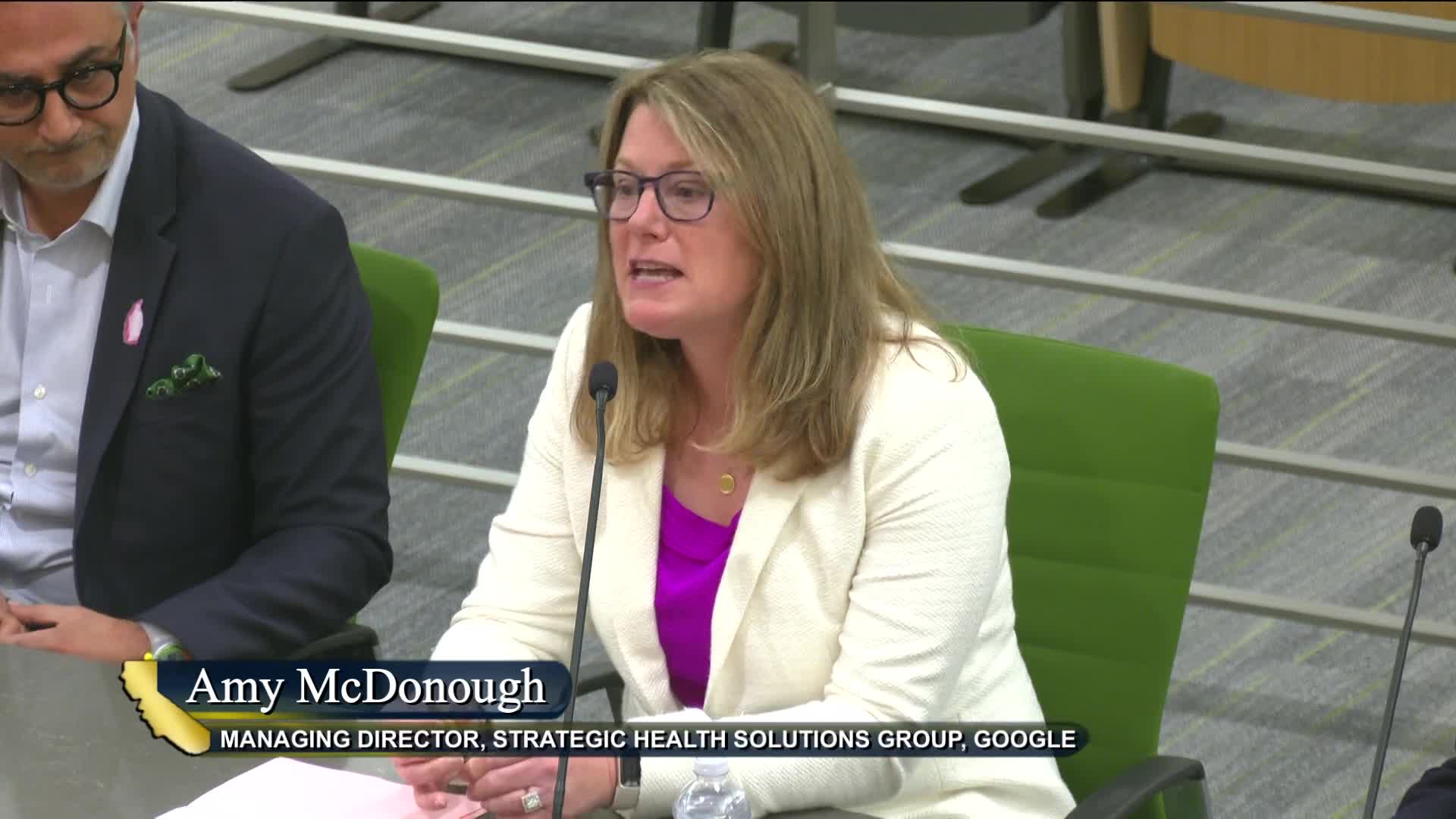California Health Care Foundation discusses AI challenges in safety net health care system
May 28, 2025 | California State Assembly, House, Legislative, California
This article was created by AI summarizing key points discussed. AI makes mistakes, so for full details and context, please refer to the video of the full meeting. Please report any errors so we can fix them. Report an error »

In a recent joint hearing held by California's Assembly Joint Hearing Health Committee and the Privacy and Consumer Protection Committee, discussions centered on the integration of artificial intelligence (AI) in healthcare and its implications for patient care and provider practices. The meeting highlighted the potential benefits and challenges of AI technologies, particularly in addressing healthcare disparities in rural areas.
One of the key topics was a research project known as AMI, which explores the use of multimodal capabilities in AI, such as listening and visual recognition, to assist in early intervention and decision-making for patients. While these tools are not yet diagnostic, they aim to guide patients toward seeking appropriate care based on common health situations, such as identifying skin rashes.
Panelists expressed concerns about the evolving role of AI in medical decision-making, particularly as younger generations of healthcare providers become more reliant on technology. This shift raises questions about the legal landscape surrounding malpractice and the responsibilities of providers when AI recommendations differ from their clinical judgments. The discussion underscored the need for clear guidelines and protections to navigate potential conflicts between AI-generated insights and human decision-making.
Cara Carter from the California Health Care Foundation emphasized the importance of considering the unique challenges faced by safety net providers as AI adoption increases. She urged policymakers to think critically about how to support equitable access to these technologies, ensuring that all Californians, especially those facing barriers to care, benefit from advancements in healthcare.
As the meeting progressed, it became clear that while AI holds promise for improving healthcare delivery, careful consideration of its implications is essential. The discussions set the stage for future panels to delve deeper into the challenges and opportunities presented by AI in California's healthcare system, aiming to shape a future that prioritizes both innovation and patient safety.
One of the key topics was a research project known as AMI, which explores the use of multimodal capabilities in AI, such as listening and visual recognition, to assist in early intervention and decision-making for patients. While these tools are not yet diagnostic, they aim to guide patients toward seeking appropriate care based on common health situations, such as identifying skin rashes.
Panelists expressed concerns about the evolving role of AI in medical decision-making, particularly as younger generations of healthcare providers become more reliant on technology. This shift raises questions about the legal landscape surrounding malpractice and the responsibilities of providers when AI recommendations differ from their clinical judgments. The discussion underscored the need for clear guidelines and protections to navigate potential conflicts between AI-generated insights and human decision-making.
Cara Carter from the California Health Care Foundation emphasized the importance of considering the unique challenges faced by safety net providers as AI adoption increases. She urged policymakers to think critically about how to support equitable access to these technologies, ensuring that all Californians, especially those facing barriers to care, benefit from advancements in healthcare.
As the meeting progressed, it became clear that while AI holds promise for improving healthcare delivery, careful consideration of its implications is essential. The discussions set the stage for future panels to delve deeper into the challenges and opportunities presented by AI in California's healthcare system, aiming to shape a future that prioritizes both innovation and patient safety.
View full meeting
This article is based on a recent meeting—watch the full video and explore the complete transcript for deeper insights into the discussion.
View full meeting
